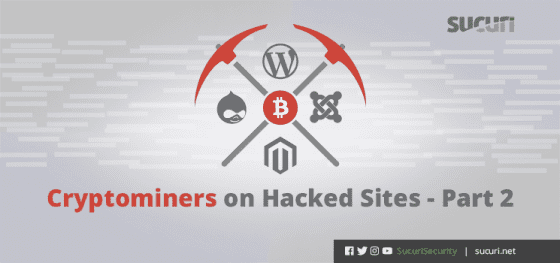
Last month we wrote about how the emergence of website cryptocurrency miners resulted in hackers abusing the technology by injecting the CoinHive miners into compromised sites without the consent of the website owners.
We reviewed two types of infections that affected WordPress and Magento sites, and have been monitoring the malicious use of the CoinHive cryptominer. What we are discovering is that there are more and more attacks in the wild using cryptominers, which affects all major CMS platforms.
Continue reading Cryptominers on Hacked Sites – Part 2 at Sucuri Blog.
The post Cryptominers on Hacked Sites – Part 2 appeared first on Security Boulevard.
Continue reading Cryptominers on Hacked Sites – Part 2→
